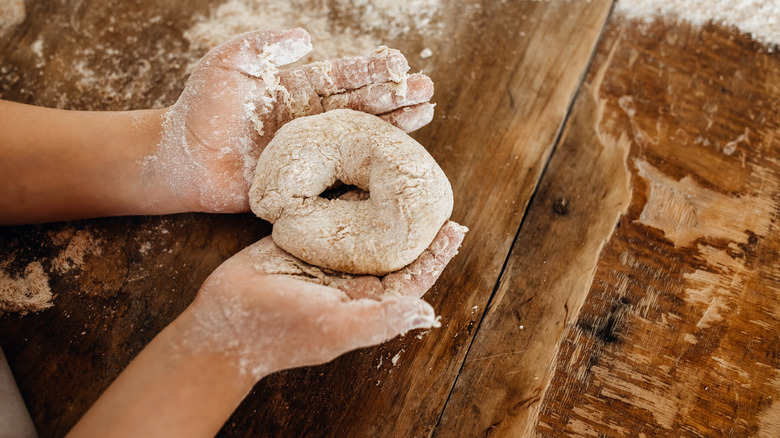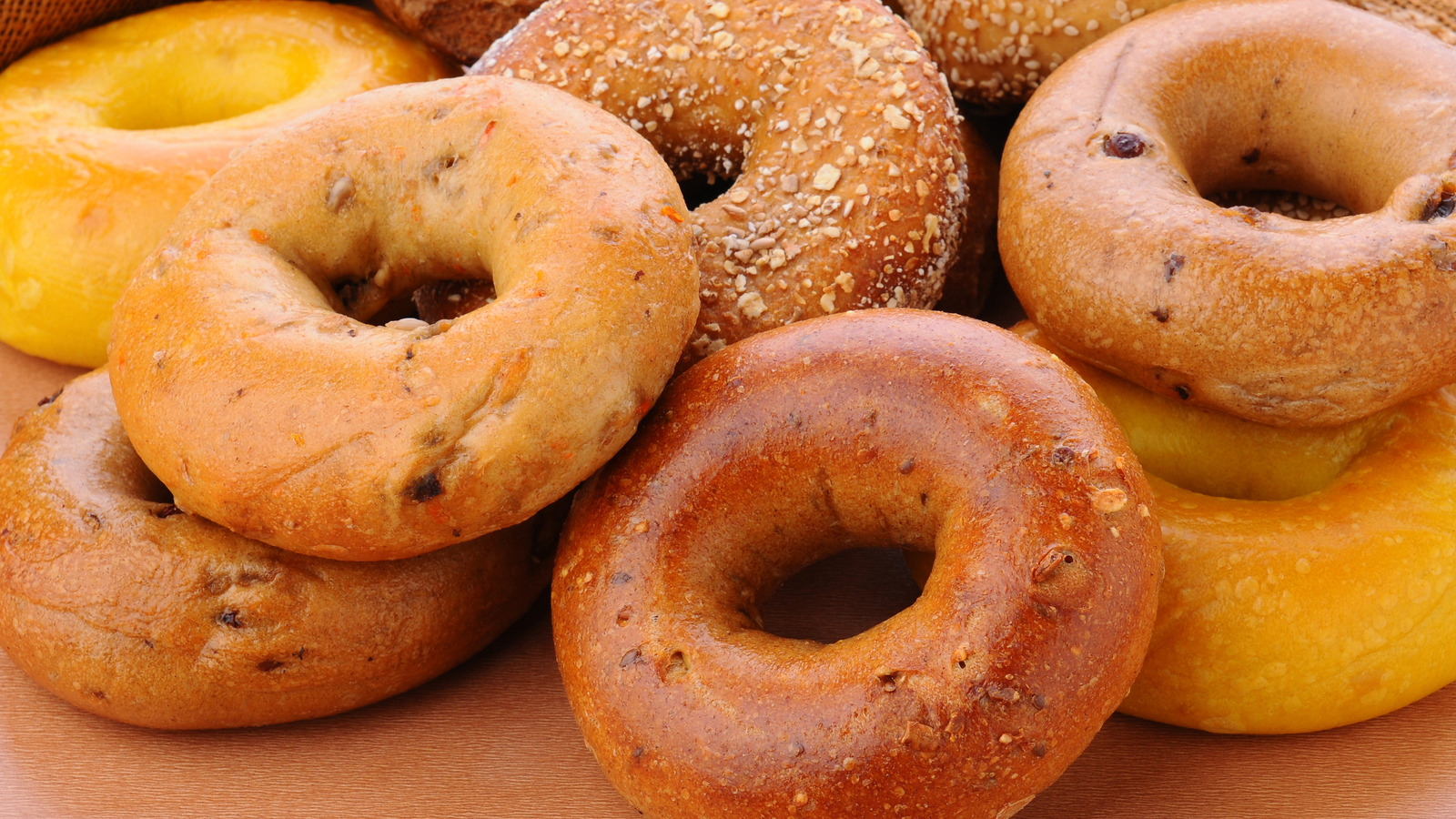The bagel is genius at appearing elementary while concealing its meticulous approach. Making it is simple, yet requires artisanal patience and perhaps expertise. You need a baking soda bath to acquire a golden crust on your bagels, this shaping tip to prevent them wrinkling, and the right kind of flour to get the perfect texture.
But the perfect texture depends on who you are. If you love your bagel New York-style, with an incredibly chewy crumb, you’ll require more than New York’s mineral-light water. Think high-gluten flour, and the higher you go, the chewier the crumb. Hard wheat flours contain the most gluten (thus, protein). Their protein content can range from 13.5 to 14.5%, providing a dense yet beautifully chewy bagel texture.
If you prefer a less chewy bagel — one that’s slightly tender with a crumb that yields more easily — choose flour with a relatively lower protein content. The lower you go, the softer the texture, with 11.5 to 13.5% protein being the ideal range to still achieve a good bagel texture. This is the typical spectrum for bread flour, and although we consider it to be relatively lower protein, it’s still a high-gluten flour. Flours with a lower protein content than this may compromise the signature chew and tight crumb that distinguishes bagels.
High-gluten flours improve bagel texture

Gluten is found in all forms of wheat flour, but its total content makes all the difference when making bagels. Its presence gives flour that lovely stretch once mixed with water, so your dough won’t crumble the way it does with gluten-free flour. Not only that, but gluten also allows for a slight spring when you press your dough. So, naturally, the more gluten present, the more elastic your bagel dough, and elasticity affects the final dough product enormously — including its texture.
More elasticity means a more dense and chewy bagel texture for you, and it’s pretty evident with bread and bagels. You can notice their differences in texture: bagels have a tight crumb, while bread has a relatively looser one. When you bite into either, you experience the intense chew of a bagel and the (still chewy but) lighter one of bread. Suffice it to say their difference in gluten content has lots to do with that.
That said, there are a lot more factors that determine the final texture of bagels. Namely, the amount of water you add to the flour, how long you knead the dough, how long the dough ferments and at what temperature, and, of course, whether you boil your bagel dough or not. The type of flour you use is only one contributing factor, but ultimately still determines whether you’ll achieve your desired bagel texture.







